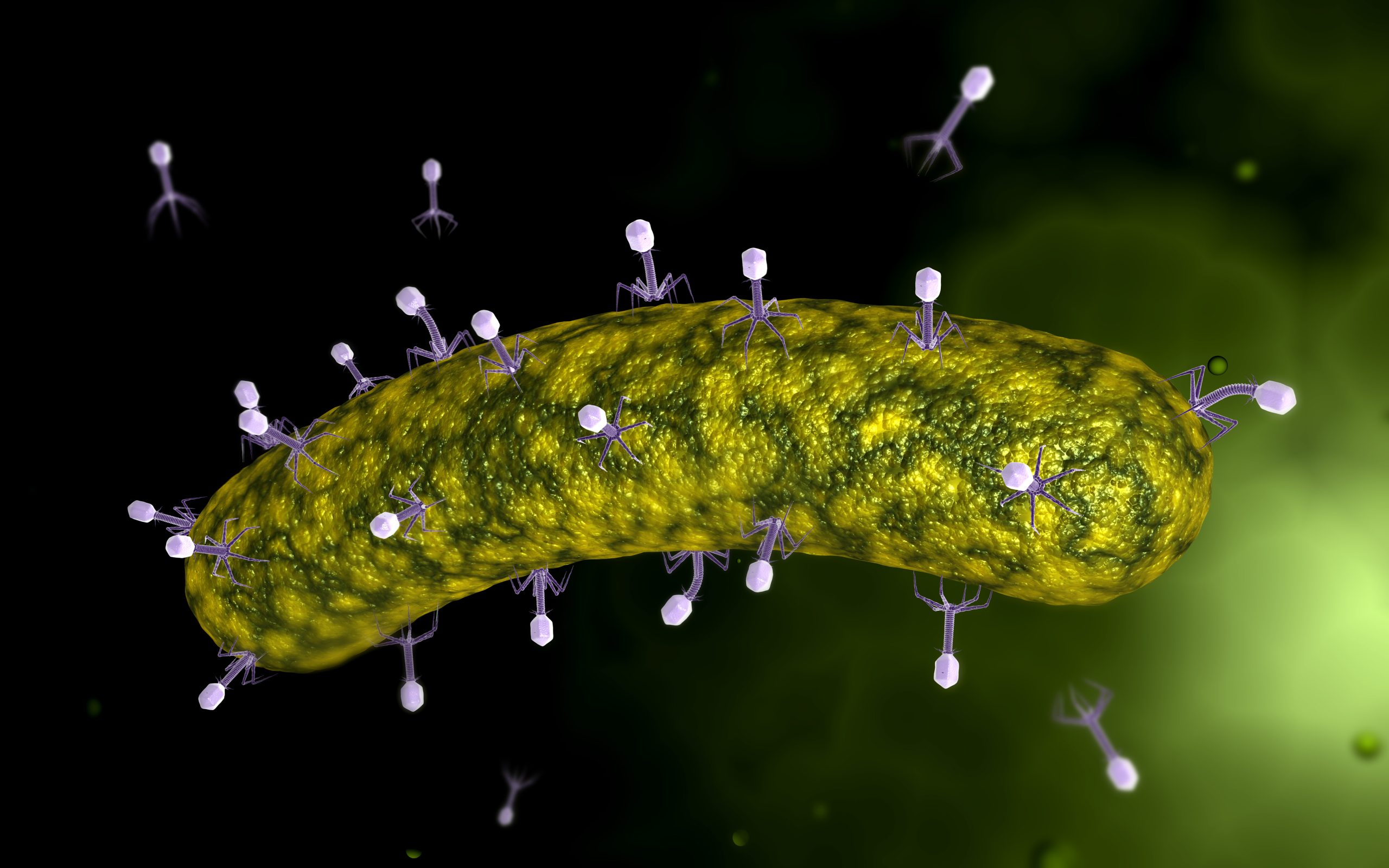CRISPR-Cas is the tool of choice for genetic engineering. It is based on a bacterial immune system. TU Delft researchers, Kieper and Almendros, have now shown the pivotal function one of its proteins, Cas4.
Bacteria have tough lives. They are under constant attack by viruses called bacteriophages. Under the pressure of evolution, bacteria have developed an adaptive immune mechanism that, at first, seemed much too advanced for unicellular creatures. The core of the immune system is a library of DNA snippets from viruses that have attacked the bacterium or its predecessors. The distinctive sequence of repeats in the DNA interspaced with different but equally long fragments stood out in sequenced DNA from some bacteria and archaea. Researchers who discovered this pattern named it CRISPR for Clustered Regularly Interspaced Short Palindromic Repeats.
Later, associated proteins were discovered that became known as Cas (CRISPR-associated) proteins. If CRISPR can be regarded as a library of intruders, the Cas proteins are the weapons that detect and destroy any viral DNA that the CRISPR-Cas system recognises.
The best-known protein is Cas9 that cuts the DNA at precisely the location that corresponds exactly to a given guide RNA. The CRISPR-Cas system functions so universally well across species that geneticists and microbiologists nowadays apply the technique to any animal or plant species.
Cas4 is essential for the functional memory of viruses
TU Delft researchers Sebastian Kieper MSc. and Dr Cristóbal Almendros, both working at the Stan Brouns lab at the Kavli Institute for Bionanoscience (Faculty of Applied Sciences), have shown that another Cas protein, Cas4, is essential for the functional memory of viruses. In their publication in Cell Reports, they show that although bacteria without Cas4 do take samples from attacking bacteria, they fail to protect the bacteria during subsequent encounters. However, bacteria with a functional Cas4 protein store viral fragments in the CRISPR structure which does protect them during subsequent encounters. The immune system kicks in and destroys the intruder’s DNA.
The Cas4 protein ensures that the selected fragment from the viral DNA includes an anchoring point – a short sequence of base pairs – known as PAM (Protospacer Adjacent Motif).
Dr Stan Brouns, the lead author, explains: “While selecting a DNA fragment that can be incorporated as a memory in the bacterial genome, the CRISPR system must choose a sequence that is flanked by a PAM. A Cas protein uses the PAM sequence to find its target. It ignores DNA sequences without the PAM sequence. PAMs thus protect the bacteria by preventing Cas proteins from cutting up the cell’s own DNA.
Research continues into the molecular functioning of Cas4, and into how this knowledge may be applied. Possibly, the researchers speculate, adaptive immunity may be introduced into species that do not originally have a CRISPR immune system. This might make them resistant to a range of viruses.
Sebastian Kieper, Cristóbal Almendros, Stan Brouns et al., Cas4 Facilitates PAM-Compatible Spacer Selection during CRISPR Adaptation, Cell Reports, 27 March 2018.
Do you have a question or comment about this article?
j.w.wassink@tudelft.nl


Comments are closed.